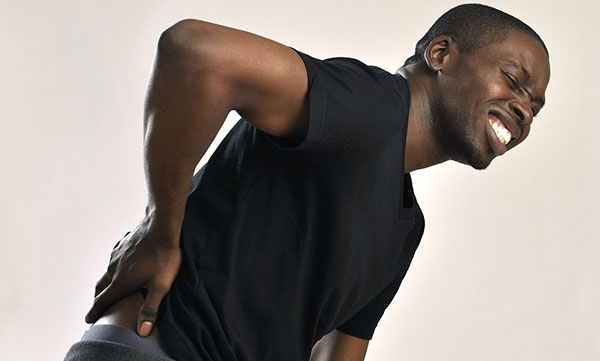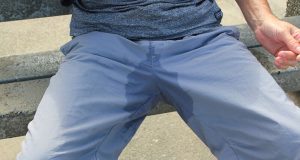By Dr. Virginia Nsitem
Pride Health Columnist
Do you experience pain when walking? Do you notice that you limp with each step? Is it painful to stand for long periods of time or climb steps? If you answered yes to any of these questions, you may be suffering from an injury to the joints and muscles in your back or lower limbs.
Low Back
The muscles in the low back work to hold our posture straight, help us bend, twist, and lift. There are also many ligaments in the low back, working to support the spine in all movements. When we twist the wrong way, bend without using our knees, engage in repetitive activities, or lift a heavy load, we may cause injury to the muscles, ligaments, and joints in the low back. Some people refer to this as a “strained” muscle or a “pulled” muscle. In essence, there is an over-stretching and tearing of the muscle fibres. When this occurs, the muscles and ligaments tighten to protect the injured tissues, and you end up with a “twisted posture” and a limp when walking.
Pelvic Muscles
The muscles in the buttock region, also called gluteal muscles, are powerful muscles that move the hip and spine. These work to help us rise from the seated position and climb stairs. Injury to these muscles can lead to compression of the sciatic nerve, leading to buttock and leg pain. A common complaint of an injury to the gluteal muscles is difficulty when walking.
Knee Joint
The knee is a joint involving three main structures – the patella (kneecap), the femur (thighbone), and the tibia (leg bone). The important muscles in the leg include the quadriceps muscles and the hamstring muscles. Injury to any of these structures can lead to pain with walking. People suffering from arthritis of the knee joint often experience pain after a short walk or climbing up a flight of stairs. The joint may feel stiff and tender, and may make a “crackling” noise.
Foot
The plantar fascia is a thick and tight piece of tissue that forms the arch of the foot. This flat band of ligament connects your heel bone to your toes. If you develop inflammation of this tissue, also called plantar fasciitis, you most likely will experience pain when walking and you may even walk with a noticeable limp.
What can be done?
The first step is to get a proper diagnosis by your chiropractor or physician. Conservative treatments for injuries to muscles and joints may include ice, stretching and strengthening exercises, chiropractic techniques to improve movement of the injured joint, soft tissue techniques to relax the muscles, and the use of modalities such as Laser therapy to help decrease the inflammation and promote healing.
Dr. Virginia Nsitem is a chiropractor specializing in laser therapy for muscle, joint and nerve injuries, and is a Fellow of the Royal College of Chiropractic Sports Sciences in Canada. She may be reached at (905) 275-4993, or by email at totalhealth@bellnet.ca.
 Pride News Canada's Leader In African Canadian & Caribbean News, Views & Lifestyle
Pride News Canada's Leader In African Canadian & Caribbean News, Views & Lifestyle





